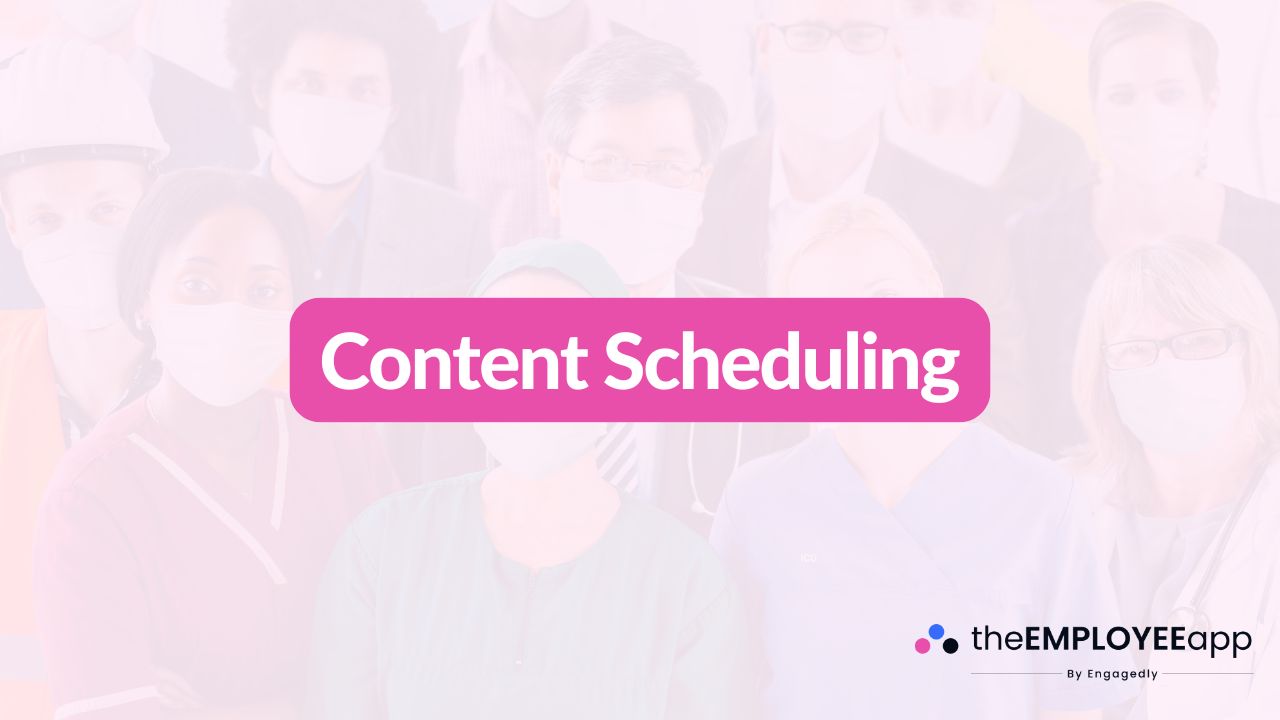
Content Scheduling
Content scheduling is the process of planning, organizing, and setting digital content to be published at specific times in the future. Instead of manually posting messages, articles, or updates in real time, organizations use scheduling tools to automate delivery. This ensures that communication reaches the right audience at the right moment, improving consistency and engagement.
Why Content Scheduling Matters
In a fast-paced work environment, employees and customers expect timely updates. Without a clear schedule, communication can become inconsistent, scattered, or even overlooked. Content scheduling allows businesses to streamline their messaging, align campaigns with strategic goals, and reduce the risk of missing important announcements. By automating delivery, teams save time and focus on creating valuable content rather than worrying about when to hit “publish.”
Core Features of Content Scheduling
Content scheduling platforms or tools generally include the following features:
Calendar view: A visual timeline that helps teams map out when and where content will be published.
Multi-channel scheduling: The ability to plan posts across different platforms such as apps, intranets, websites, or social channels.
Automated posting: Once scheduled, content is automatically delivered at the chosen time.
Drafts and approvals: Options for team collaboration, including workflows for review and approval.
Analytics and tracking: Insights into how scheduled content performs in terms of reach and engagement.
These features ensure that scheduling is not just about timing, but also about delivering content effectively.
Benefits of Content Scheduling
Consistency: Maintaining a regular communication rhythm builds trust and engagement.
Efficiency: Reduces repetitive manual posting, saving valuable time.
Strategic alignment: Ensures content supports business campaigns and organizational goals.
Global reach: For organizations with distributed teams, scheduling ensures messages go out at the right local time zones.
Collaboration: Teams can work together on content planning, reducing silos and improving coordination.
Improved engagement: Well-timed content increases the likelihood that employees or audiences will pay attention.
Content Scheduling in the Workplace
While marketing teams often use scheduling for customer-facing content, internal communications teams also rely on it heavily. For example, HR may schedule reminders for compliance deadlines, IT may schedule outage notifications, and leadership may pre-plan messages around quarterly goals. By using content scheduling within employee communication apps, organizations make sure that workers—especially frontline and deskless staff—receive timely updates without requiring managers to send them manually every time.
Examples of Content Scheduling Use Cases
Internal announcements: Scheduling company news or policy updates in advance of an event.
Training and development: Delivering scheduled learning materials at regular intervals.
Employee engagement campaigns: Rolling out recognition messages or pulse surveys on a consistent basis.
Change management communication: Planning updates around new initiatives, mergers, or technology rollouts.
Emergency preparedness: Drafting messages ahead of time for crisis scenarios so they can be quickly published if needed.
These examples demonstrate how content scheduling extends far beyond marketing—it is a core function of effective organizational communication.
Best Practices for Content Scheduling
To get the most out of content scheduling, organizations should:
Plan ahead: Use an editorial or communication calendar to map out messages.
Balance automation with flexibility: While scheduling saves time, it’s important to remain adaptable in case urgent updates arise.
Leverage analytics: Use performance data to refine the timing and type of scheduled content.
Prioritize clarity: Even when pre-planned, content should be clear, concise, and tailored to the audience.
Integrate with strategy: Ensure scheduled content aligns with broader organizational objectives.
The Future of Content Scheduling
As digital communication continues to evolve, content scheduling is becoming more intelligent. Many platforms now use AI to recommend the best times to publish, based on audience behavior and engagement patterns. Mobile-first scheduling also ensures that content can be planned and adjusted on the go, making it easier for communication teams to stay agile. In the future, scheduling will likely go beyond timing and incorporate personalization, delivering the right message to the right person at precisely the right moment.
Conclusion
Content scheduling is more than just a convenience—it is a strategic approach to communication. By enabling organizations to plan, automate, and optimize content delivery, it ensures that messages are consistent, timely, and effective. Whether used for customer-facing campaigns or internal employee communication, content scheduling helps organizations stay organized, aligned, and connected.
